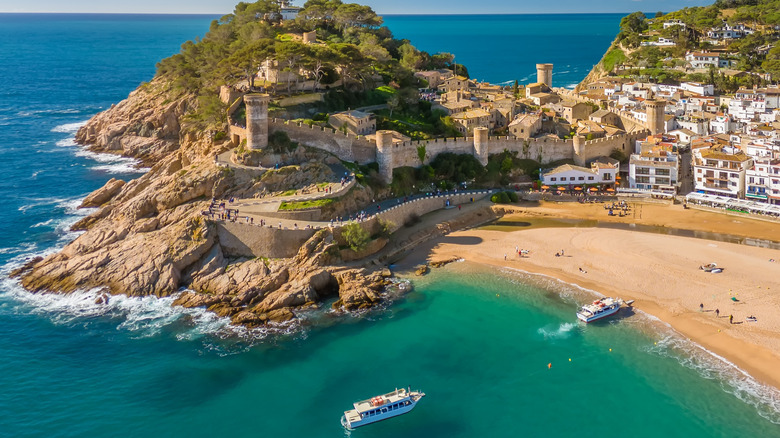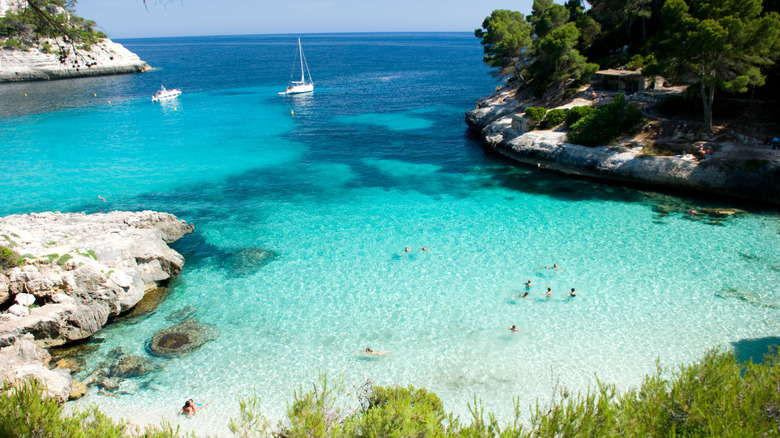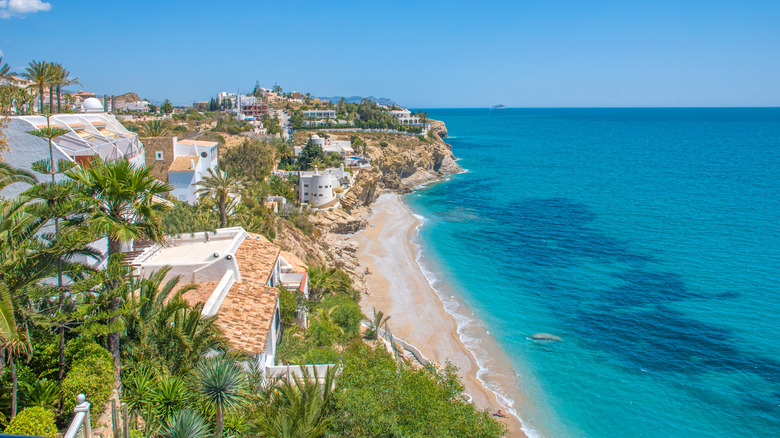One Popular European Country Boasts The World's Largest Number Of Sparkling Clean Blue Flag Beaches
Europe certainly has no shortage of world-class beaches. From the secluded bays of Lefkada in Greece to the ochre-tinged coves of the Algarve in southern Portugal, it's a land peppered with enough gorgeous sands to keep even the most dedicated beach bum happy for decades. But there's one country that stands out from the crowd when it comes to picture-perfect coastlines, boasting more prestigious Blue Flag beaches than any other: Spain.
Yep, the land of flamenco, tapas, and tomato-throwing festivals reigns supreme, not only in Europe but across the whole globe. It counts a whopping total of 747 designated Blue Flag sites at the time of writing, including over 630 individual beaches and 102 marinas. That's well ahead of Greece, Turkey, Italy, and France, who all have at least 100 fewer Blue Flag sites stringing along their coasts.
These spots are all over the place, too. You can settle in to swim and sunbathe on Blue Flag beaches along the shores of the balmy Canary Islands if you like. Meanwhile, The Telegraph picks three top Blue Flag beaches amid the pine-fringed inlets of the Balearics but also highlights the more rugged options in the Basque Country in northern Spain. And that's not even mentioning the stacks of Blue Flag sands — around 100 — that pepper the shores of the vacation mecca that is Andalusia!
The draw of Spain's Blue Flag beaches
So, what does Blue Flag mean, exactly, and why should a country with over 700 designed Blue Flag sites pique the interest of avid beach pilgrims? The answer: cleanliness. Blue Flag is one of the world's most recognized organizations for monitoring water quality and environmental standards at marine and coastal sites — and its coveted awards are not easy to achieve.
To gain Blue Flag status, beaches must adhere to a long list of over 30 criteria, which includes mandatory water quality sampling every 31 days in the main season, a requirement for beach authorities to provide environmental education programs, and even the promotion of sustainable transport options to and from the beach.
The upshot? Beaches with Blue Flag designation are likely to be among the cleanest and most sustainable you'll find anywhere on Earth. Spain's abundance of options means you can rest assured that you're enjoying the crème de la crème of coastline across multiple sites when you hop the shoreline of the Costa Brava or scour the wild cliffs and bays of Galicia. In fact, some regions in Spain count so many Blue Flag spots that you could visit a new beach every day for several months without encountering the same one twice.
Valencia leads the way among Spain's Blue Flag beaches
When it comes to Blue Flag awards, there's one region in Spain that you simply can't ignore. Valencia rolls down from the Iberian mountains to the sparkling Mediterranean Sea, incorporating three separate provinces and 279 miles of Spanish coastline. It's among the most-visited parts of the country, drawing in an estimated 2.5 million travelers each year (per Spain's Ministry of Industry and Tourism). Many will know it for the city of Valencia, which has one of Europe's largest historic centers, but the beaches are just as iconic. What's more, an impressive 159 of them were given Blue Flag status in 2024, solidifying Valencia as the top region for those in search of Vitamin Sea.
Your options in the region are seemingly endless. Stick to the city by heading down to the long, wide stretch of La Malvarrosa beach, a bustling place within Valencia urban limits, where cafes and tapas bars pepper a palm-threaded promenade. Grab the surfboard and hit the wave-washed sands of Marenyet south of Cullera. Or go a bit more remote, out to the dune-backed, sea-oat-covered wilds of La Garrofera. All are downright lovely and come with the added bonus of Blue Flag ratings for quality and environmental standards.


